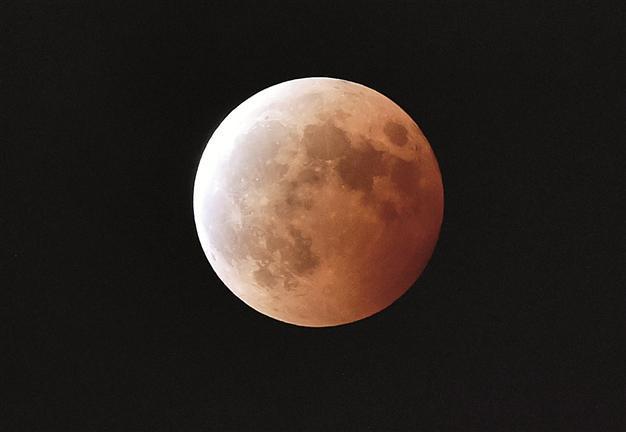‘Super blood moon’ to give stargazers a rare sight
PARIS – Agence France-Presse

AFP Photo
For the first time in decades, stargazers are in for the double spectacle of a swollen “super moon” bathed in the blood-red light of a total eclipse on Sept. 28.The celestial show, visible from the Americas, Europe, Africa, west Asia and the east Pacific, will be the result of the Sun, the Earth and a larger-than-life, extra-bright Moon lining up for just over an hour from 2:11 a.m. GMT.
“It will be quite exciting and especially dramatic,” predicted astronomer Sam Lindsay of the Royal Astronomical Society in London. “It’ll be brighter than usual, bigger than usual.”
The Moon will be at its closest orbital point to Earth, called perigee, while also in its brightest phase.
The resulting “super moon” will look 30 percent brighter and 14 times larger than when at apogee, the farthest point, which is about 49,800 kilometers from perigee.
Unusually, our planet will take position in a straight line between the Moon and the Sun, blotting out the direct sunlight that usually makes our satellite glow whitish-yellow. But some light will still creep around Earth’s edges and be filtered through its atmosphere, casting an eerie red light that creates the “blood moon.”
The Moon travels to a similar position every month, but the tilt of its orbit means it normally passes above or below the Earth’s shadow; so most months have a full moon minus eclipse.
For people younger than 33, this will be their first-ever chance to see a “super blood moon.”
The last, only the fifth recorded since 1900, was in 1982, according to the NASA space agency, and the next will not be until 2033.
















